Mini Rogue
I’ve had a chance to test another tabletop game: Mini Rogue!
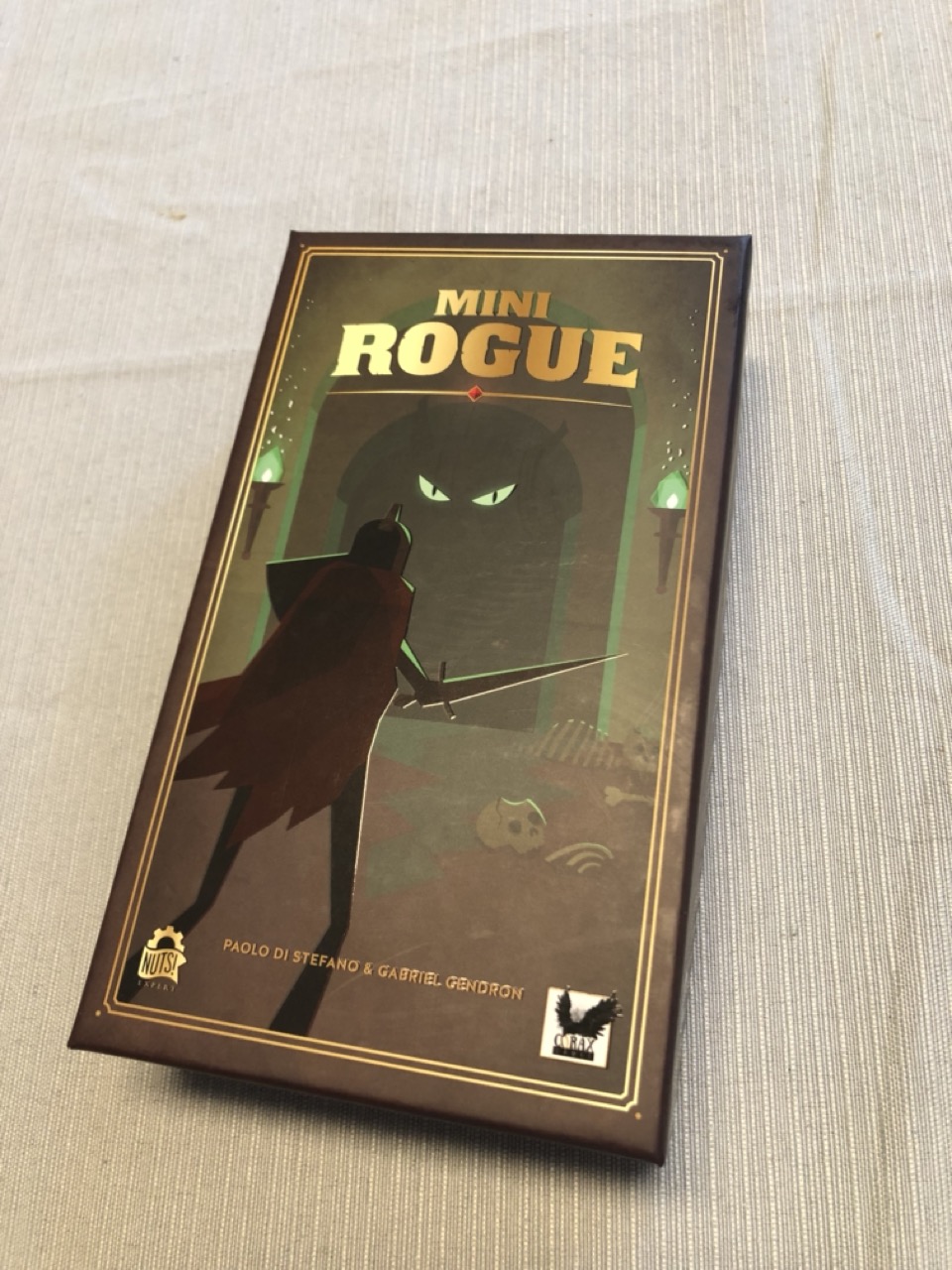
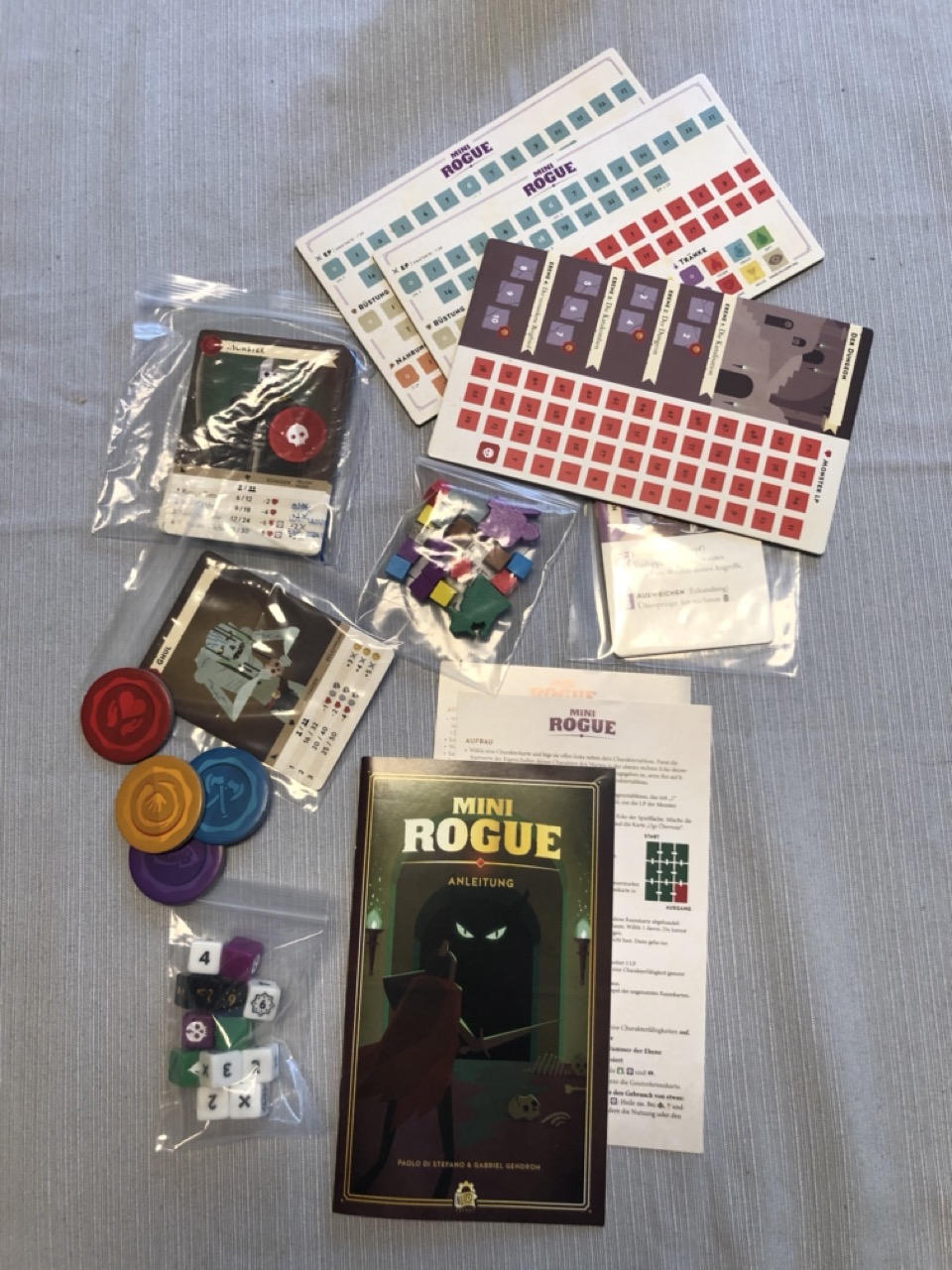
Mini Rogue is a classic dungeon crawler, and it’s solo playable. Optionally, a second player can join for a cooperative mode.
Here’s the single-player setup. Everything about the player’s character is at the bottom: character card (there are several, with different capabilities), character data (experience and life, armour and gold, food and potions), and rewards. The character starts at level 1, with one (white) character die and the (black) dungeon die, which is used to control all kinds of events.
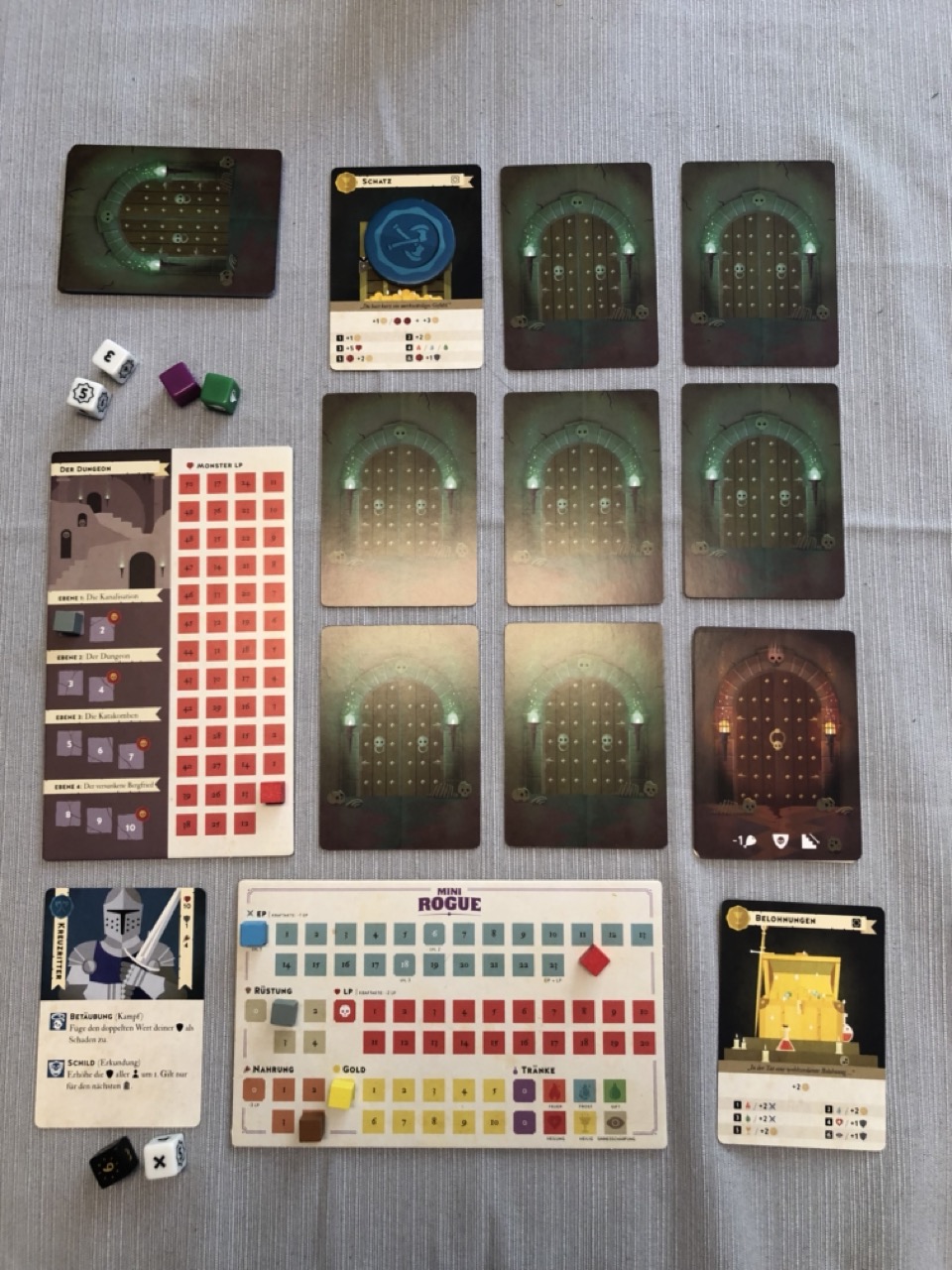
The dungeon is organised into four levels (see the card on the left), each of which has a boss monster to fight at the end. The current part of the dungeon is laid out as a 3x3 grid of room cards. The player enters the part of the dungeon at the top left, and proceeds right-and-down to the bottom right, where there are exits or bosses.
Each room is first “handled” - this involves the typical dungeon crawler activities: finding treasures, fighting monsters, falling into traps - before the two adjacent room cards are unveiled and the player can pick which room to explore next. The cards use a clear yet complex-at-first visual language to concisely describe the effects and benefits of events.
Of course, in my first game, I was utterly defeated by some kind of worm (see how the red life points marker is at zero):
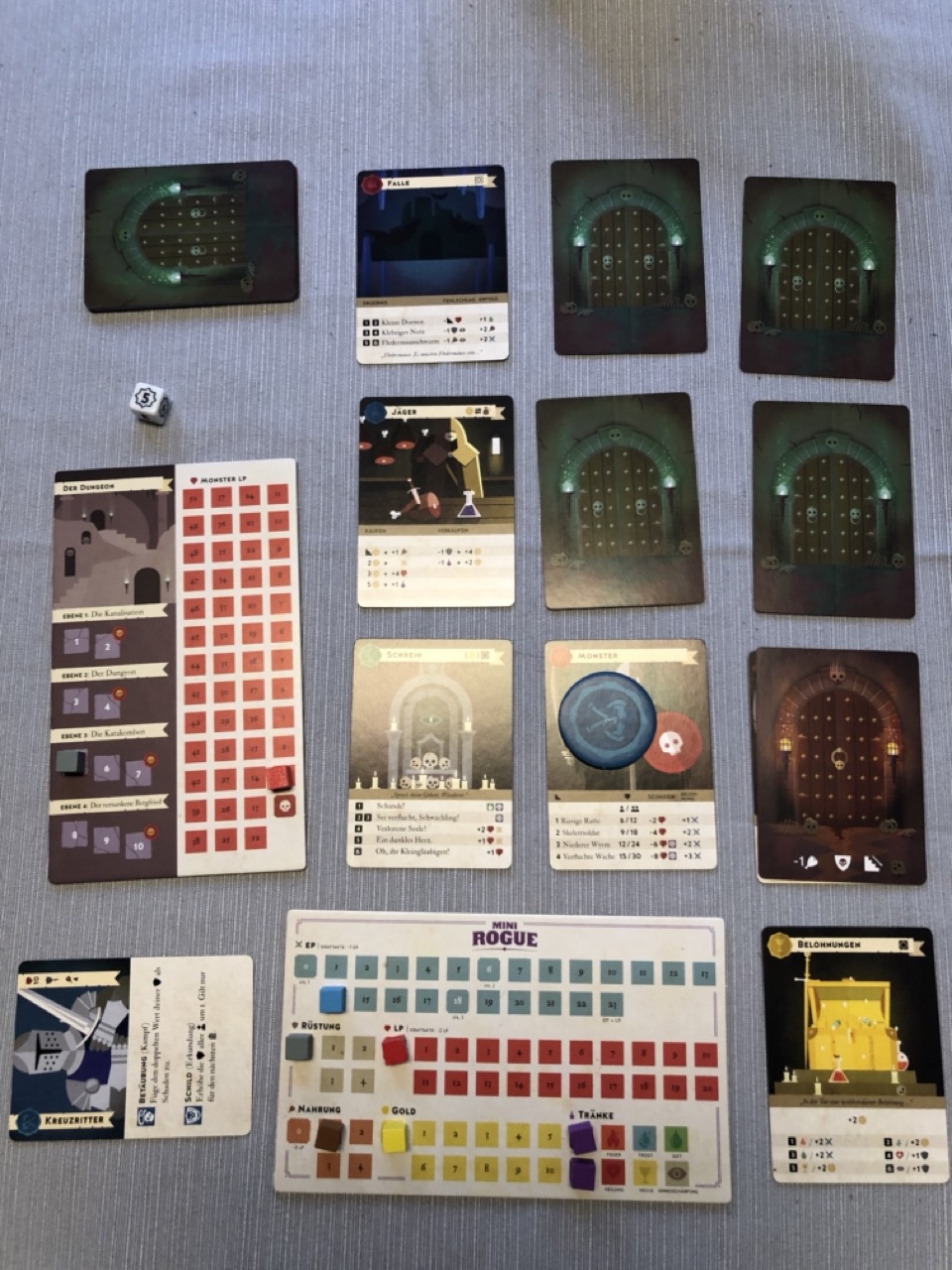
Still, I thought this was fun, so I continued to play. It took me five or six attempts, but eventually I triumphed:
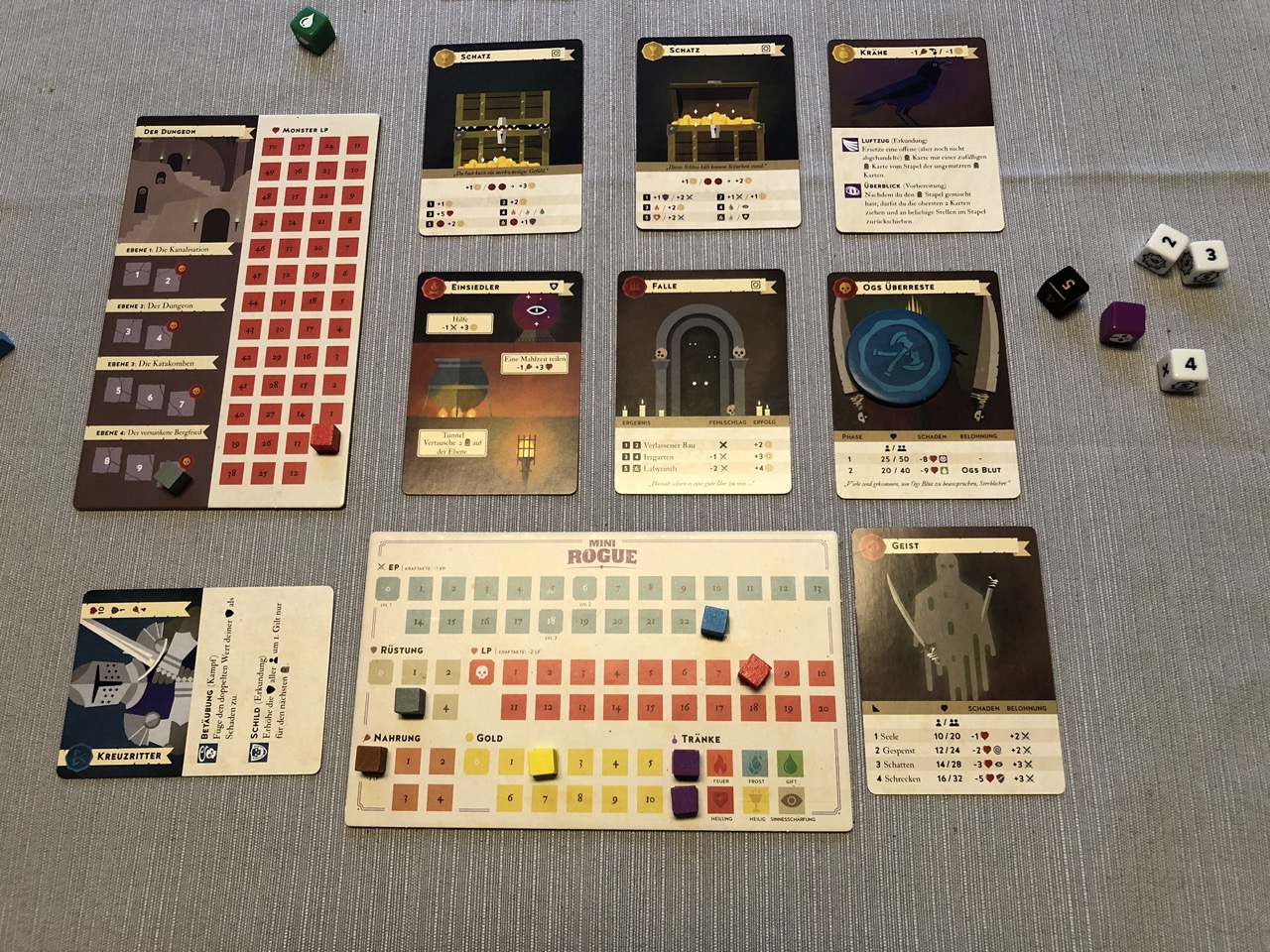
Note how there are suddenly three white dice: this means my character advanced to level 3. There’s also a purple die: this means the character got cursed. If the curse die shows a skull (this will happen in 50 % of rolls), all character dice have one point removed from them. The green die (visible here at the top left) is for when the character is poisoned. Happily, that wasn’t the case here.
I loved playing Mini Rogue. It’s fast-paced and fun. The somewhat complex mechanics and many different aspects made it necessary to read things up in the manual a lot, but that got better over time. I believe that once I’ll have understood and memorised the rules, it’ll be a breeze.
The game isn’t easy to win. It takes some amount of careful planning, tactics, and strategy. However, the game is biased towards luck: the best tactics will fail if the dice and cards don’t agree. This bias is a bit too strong in my taste, but maybe that’s just me being inexperienced. I’ll definitely give it more chances. Also because I want to try two-player mode soon. Warm recommendation.
Tags: games